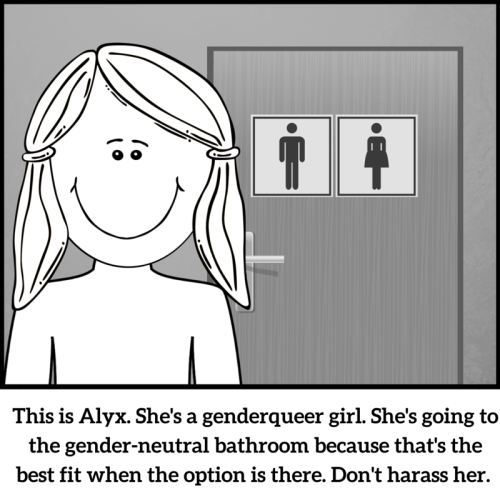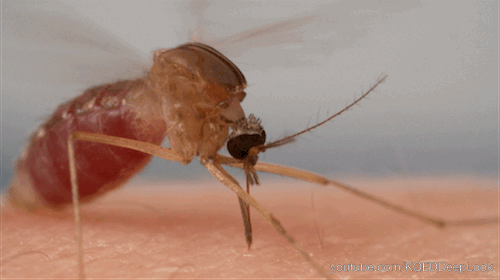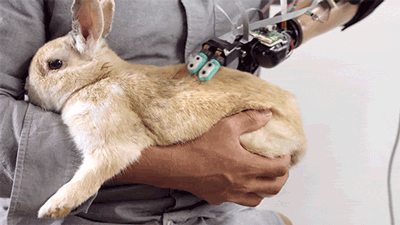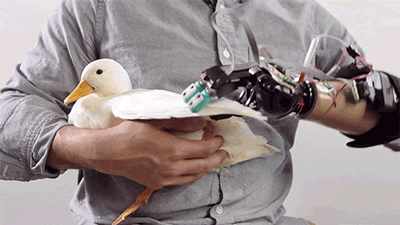Solar System: Things To Explore On Your Phone This Week
Solar System: Things to Explore on Your Phone This Week
Let our apps lead you on a journey of exploration across the Earth, through the solar system and beyond. Here are some to download today:
1. Actually, it is rocket science Rocket Science 101 let’s you select your favorite mission and build a rocket to take you to destinations near and far. Learn how launch vehicles are configured and how their boosters and other component parts work together to successfully launch spacecraft.
iOS Google Play

2. Go to Mars (sort of) Be A Martian lets you experience Mars as if you were there! Join an international community of explorers. See the latest images of the Red Planet! Learn about Mars, ask questions, and check out behind-the-scenes videos of the missions.
iOS Google Play

3. All the Earth science With Earth Now, watch Earth science satellites in real time as they gather data about our home planet. Get real-time images of the places we call home. Check out global climate data, including surface air temperature, carbon dioxide, carbon monoxide, ozone, and sea level variations.
iOS Google Play

4. Pretty pictures Discover stunning images and videos of our planet Earth, space, stars and planets with Space Images. Find your favorite galaxies and explore our celestial neighborhood.
iOS Google Play

5. Ch-ch-ch-changes Images of Change give you a close-up view of our ever-changing planet. Inside this app, before and after image pairs show areas that have been subject to natural disasters or seen significant change over time.
iOS

Last but not least: NASA on the go With our official NASA app, explore and discover the latest images, videos, mission information, news, feature stories, tweets, NASA TV and featured content from across America’s space program.
iOS Google Play

Our apps let you explore our latest images, videos,and mission news.
Discover the full list of 10 apps showcasing our solar system this week HERE.
Make sure to follow us on Tumblr for your regular dose of space: http://nasa.tumblr.com
More Posts from Er-zico and Others

Eye Study Underscores the Long Lasting Benefits of Controlling Diabetes
NIH-funded study shows less diabetic retinopathy progression among those who underwent intensive glycemic control.
The research is in Diabetes Care. (full access paywall)









Some of the heaviest elements ever seen have been given tentative names by their discoverers. The namesakes? Three places and a Russian dude.
These names aren’t settled on quite yet - there is a five month probation period during which the International Union of Pure and Applied Chemistry (IUPAC) welcomes public comment. You can email the IUPAC president directly with your thoughts.
If you discovered an element, what would you name it?










Society as a whole has yet to understand that gender is non-binary. Tumblr at least can be a cathartic place to deal with those stigmas and misunderstandings. One comic uses numbers to beautifully show how binary gender is bullshit.









All of the animals above — and more — are “critically endangered.”










Bathrooms should be a safe and comfortable place for all. Don’t harass or attacks trans or gender nonconforming people for accessing a basic need. For more on this issue, check out episode 17 of the Sex Law Podcast (also on iTunes here).
And follow SexEdPlus for more graphics about gender, sexuality, and more. Like THIS ONE about gender identity!



Seen up close, the anatomy of a mosquito bite is terrifying. The most dangerous animal in the world uses six needle-like mouthparts to saw into our skin, tap a blood vessel and sometimes leave a dangerous parting gift. NEW from @kqedscience‘s Deep Look!
Space Station Science: Biological Research

Each month, we highlight a different research topic on the International Space Station. In August, our focus is biological research. Learning how spaceflight affects living organisms will help us understand potential health risks related to humans on long duration missions, including our journey to Mars.

Cells, microbes, animals and plants are affected by microgravity, and studying the processes involved in adaptation to spaceflight increases our fundamental understanding of biological processes on Earth. Results on Earth from biological research in space include the development of new medications, improved agriculture, advancements in tissue engineering and regeneration, and more.
Take a look at a few of the biological research experiments performed on space station:
Biomolecule Sequencer

Living organisms contain DNA, and sequencing DNA is a powerful way to understand how they respond to changing environments. The Biomolecule Sequencer experiment hopes to demonstrate (for the first time) that DNA sequencing is feasible in an orbiting spacecraft. Why? A space-based DNA sequencer could identify microbes, diagnose diseases and understand crew member health, and potentially help detect DNA- based life elsewhere in the solar system.
Ant-stronauts

Yes, ant-stronauts…as in ants in space. These types of studies provide insights into how ants answer collective search problems. Watching how the colony adapts as a unit in the quest for resources in extreme environments, like space, provides data that can be used to build algorithms with varied applications. Understanding how ants search in different conditions could have applications for robotics.
TAGES

The TAGES experiment (Transgenic Arabidopsis Gene Expression System) looks to see how microgravity impacts the growth of plant roots. Fluorescent markers placed on the plant’s genes allow scientists to study root development of Arabidopsis (a cress plant) grown on the space station. Evidence shows that directional light in microgravity skews root growth to the right, rather than straight down from the light source. Root growth patters on station mimic that of plants grown at at 45% degree angle on Earth. Space flight appears to slow the rate of the plant’s early growth as well.
Heart Cells

Spaceflight can cause a suite of negative health effects, which become more problematic as crew members stay in orbit for long periods of time. Effects of Microgravity on Stem Cell-Derived Cardiomycytes (Heart Cells) studies the human heart, specifically how heart muscle tissue contracts, grows and changes in microgravity. Understanding how heart muscle cells change in space improves efforts for studying disease, screening drugs and conducting cell replacement therapy for future space missions.
Medaka Fish

Chew on these results…Jaw bones of Japanese Medaka fish in microgravity show decreased mineral density and increased volume of osteoclasts, cells that break down bone tissue. Results from this study improve our understanding of the mechanisms behind bone density and organ tissue changes in space.
These experiments, and many others, emphasize the importance of biological research on the space station. Understanding the potential health effects for crew members in microgravity will help us develop preventatives and countermeasures.
Make sure to follow us on Tumblr for your regular dose of space: http://nasa.tumblr.com
Chicago task force releases landmark report, calls on Police Chief to acknowledge racism in police force
Yesterday, Chicago’s Police Accountability Task Force released its final report. Historically, the report called on the newly appointed Chicago Police Superintendent to acknowledge the force’s “history of racial disparity and discrimination.” Many believe the report, which many believe forced Mayor Rahm Emanuel to publicly acknowledge the Chicago Police Department’s continued issues with racism and to consider dismantling the city’s widely criticized Internal Police Review Board.
The task force was established in response to the public outcry in the wake of the death of Laquan McDonald, who was shot 16 times while running away from a Chicago Police Officer. The task force “dug deeper into the complaints of so many about the callous and disrespectful way in which they had been treated by some officers” within the CPD, and recommended sweeping changes to what it described as “systemic problems in CPD.”
The source of the current state of mistrust and animosity between the public and the CPD, it found, was the result of
racism
a mentality in CPD that the ends justify the means
a failure to make accountability a core value and imperative within CPD
a significant underinvestment in human capital



Below are the recommendations of the task force:
How We Propose to Empower People.
Create a Community Safety Oversight Board, allowing the community to have a powerful platform and role in the police oversight system.
Implement a citywide Reconciliation Process beginning with the Superintendent publicly acknowledging CPD’s history of racial disparity and discrimination, and making a public commitment to cultural change.
Replace CAPS with localized Community Empowerment and Engagement Districts (CEED) for each of the city’s 22 police districts, and support them accordingly. Under CEED, district Commanders and other leadership would work with local stakeholders to develop tailored community policing strategies and partnerships.
Renew commitment to beat-based policing and expand community patrols so that officers learn about and get to know the communities they serve, and community members take an active role in partnering with the police.
Reinvigorate community policing as a core philosophy and approach that informs actions throughout the department.
Evaluate and improve the training officers receive with respect to youth so that they are prepared to engage in ways that are age-appropriate, trauma-informed and based in a restorative justice model.
Require CPD and the police oversight system to be more transparent and release to the public incident-level information on arrests, traffic and investigatory stops, officer weapon use and disciplinary cases.
Host citywide summits jointly sponsored by the Mayor and the President of the Cook County Board to develop and implement comprehensive criminal justice reform.
Encourage the Mayor and President of the Cook County Board to work together to develop and implement programs that address socioeconomic justice and equality, housing segregation, systemic racism, poverty, education, health and safety.
Adoption of a citywide protocol allowing arrestees to make phone calls to an attorney and/or family member(s) within one hour of arrest.
Implementation of citywide “Know Your Rights” training for youth.
How We Propose to Address the Inadequate Emphasis on Accountability
Create a dedicated Inspector General for Public Safety, which would independently audit and monitor CPD and the police oversight system, including for patterns of racial bias.
Replace the Independent Police Review Authority with a new and fully transparent and accountable Civilian Police Investigative Agency, which will enhance structural protections, powers and resources for investigating serious cases of police misconduct, even in the absence of sworn complaints. The new CPIA should ensure an accessible, professional and supportive complaint process.
Implement a data-driven, best-in-class Early Intervention System for CPD to identify officers with problems before they become problems for the community.
Fundamentally change provisions in the collective bargaining agreements that are impediments to accountability, such as allowing for anonymous complaints, eliminating the ability to change statements after reviewing video and removing the requirement to destroy complaint records.
Fully implement the first-in-the-nation written video release policy for officer-involved shootings.
Expand CPD’s body cam pilot program.
Require that all disciplinary information be provided online so that citizens can track complaints and discipline histories.
How We Propose to Address Other Systemic and Longstanding Problems
Establish for the first time in Chicago a Deputy Chief of Diversity and Inclusion in CPD.
Implement policies to dismantle the institutionalization of the police “code of silence,” including substantial changes to the collective bargaining agreements between the police and the City, ending command channel review, reforming the role of CPD supervisors and pattern and practice analysis.
Establish a smart 911 system for OEMC, allowing residents to pre-enter information on mental health or other issues that would be instantly available to OEMC operators.
Create a multi-layer co-responder system where mental health providers work with OEMC and CPD to link individuals to treatment.
Expand significantly the Crisis Intervention System for CPD and other first responders.
Create a “Mental Health Critical Response Unit” within CPD that is responsible for mental health crisis response functions, training, support, community outreach and engagement, cross-agency coordination and data collection.
Create a hotline for CPD members, whether civilian or sworn, to lodge complaints, and develop a third-party system for the processing and follow-up of all comments and complaints reported to the hotline.



Check out this robotic hand which can touch and feel, improving perception and reflexes for its user. [ Δ ]










Travel Sketches of México by Parker Jones
Parker Jones is drawing the Mexican landscape while cycling 3,000 miles south from the US border. Parker Jones is a freelance designer based in Lake City , Utah.
You can see more of his work on Instagram or his website.
-
 deadman-crow reblogged this · 5 years ago
deadman-crow reblogged this · 5 years ago -
 syntheticbuttdork liked this · 6 years ago
syntheticbuttdork liked this · 6 years ago -
 fionakasmi-blog reblogged this · 7 years ago
fionakasmi-blog reblogged this · 7 years ago -
 147archived liked this · 7 years ago
147archived liked this · 7 years ago -
 emlow liked this · 7 years ago
emlow liked this · 7 years ago -
 bengingitis liked this · 7 years ago
bengingitis liked this · 7 years ago -
 evoooool liked this · 7 years ago
evoooool liked this · 7 years ago -
 semper-benz reblogged this · 8 years ago
semper-benz reblogged this · 8 years ago -
 shockandfright liked this · 8 years ago
shockandfright liked this · 8 years ago -
 dlaing23 liked this · 8 years ago
dlaing23 liked this · 8 years ago -
 footstepsinthesky liked this · 8 years ago
footstepsinthesky liked this · 8 years ago -
 senoritafish liked this · 8 years ago
senoritafish liked this · 8 years ago -
 chijuli liked this · 8 years ago
chijuli liked this · 8 years ago -
 druiddaegal reblogged this · 8 years ago
druiddaegal reblogged this · 8 years ago -
 itzxana liked this · 8 years ago
itzxana liked this · 8 years ago -
 morgondagar reblogged this · 8 years ago
morgondagar reblogged this · 8 years ago -
 alex-on-the-enterprise liked this · 8 years ago
alex-on-the-enterprise liked this · 8 years ago -
 timshel901 reblogged this · 8 years ago
timshel901 reblogged this · 8 years ago -
 kat-tips reblogged this · 8 years ago
kat-tips reblogged this · 8 years ago -
 billybylletes reblogged this · 8 years ago
billybylletes reblogged this · 8 years ago -
 billybylletes liked this · 8 years ago
billybylletes liked this · 8 years ago -
 carlosemiliopir liked this · 8 years ago
carlosemiliopir liked this · 8 years ago -
 arathermediocrewave liked this · 8 years ago
arathermediocrewave liked this · 8 years ago -
 mgnto liked this · 8 years ago
mgnto liked this · 8 years ago -
 oniwoolf-blog liked this · 8 years ago
oniwoolf-blog liked this · 8 years ago -
 fangirl-life-forever liked this · 8 years ago
fangirl-life-forever liked this · 8 years ago -
 postalpidgeon reblogged this · 8 years ago
postalpidgeon reblogged this · 8 years ago -
 seafailer liked this · 8 years ago
seafailer liked this · 8 years ago -
 undeddie reblogged this · 8 years ago
undeddie reblogged this · 8 years ago -
 goblinly-princess reblogged this · 8 years ago
goblinly-princess reblogged this · 8 years ago -
 could-rattle-the-stars liked this · 8 years ago
could-rattle-the-stars liked this · 8 years ago
Dear Readers,Welcome to my personal blog. I'm Sabyasachi Naik (Zico,24).An Agnostic,deeply NON religious(atheist), and Secular Progressive Civil Engineer . I'm brown and proud to be an Indian tribe. “I want to say a word to the Brahmins: In the name of God, religion, sastras you have duped us. We were the ruling people. Stop this life of cheating us from this year. Give room for rationalism and humanism.” ― Periyar E.V. Ramasamy
198 posts